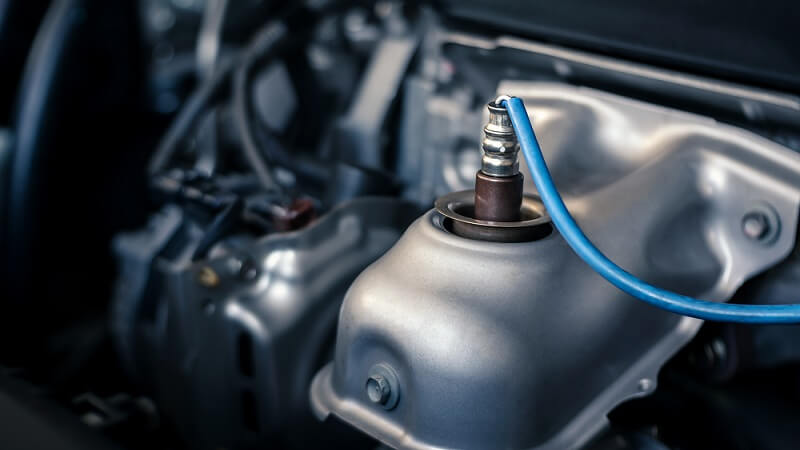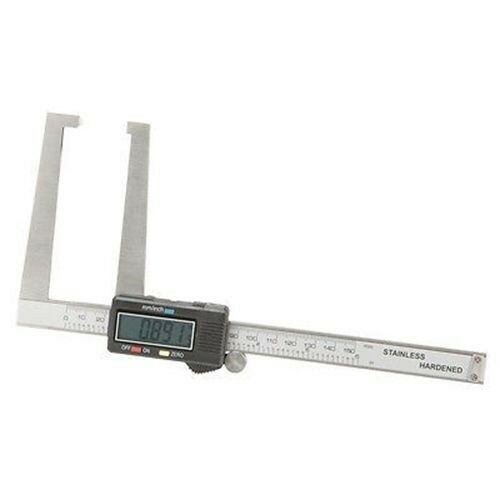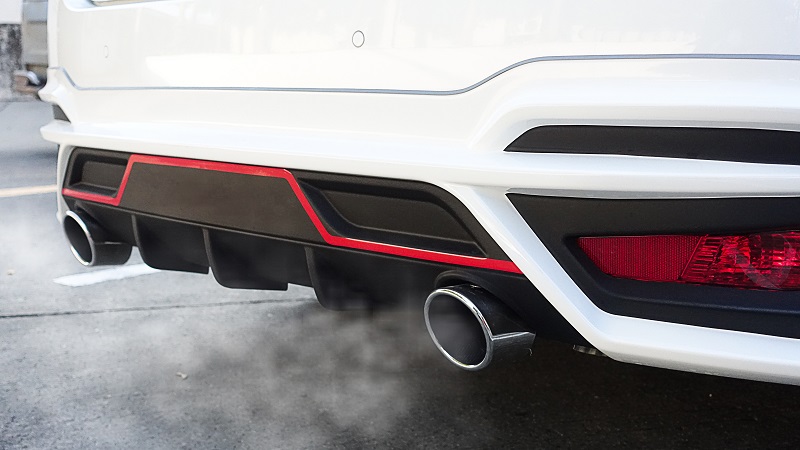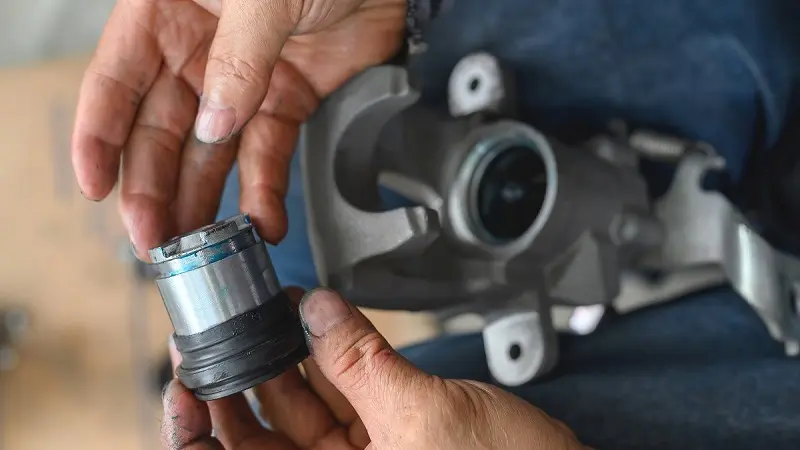AC is a fairly complex system. While it’s engaged and disengaged with a simple push of a button, there’s a lot more that goes on behind the scenes to make it work. An AC in a vehicle is made of numerous components such as the compressor, evaporator, condenser, AC accumulator (dryer), and orifice tube. Each and every one of these components has to be in perfect working order to allow the system to blow clean and cold air.
Each of the several components that form the AC system is tasked with a unique, but equally important job. However, the ones we’ll be discussing here, in detail, are the AC accumulator and the orifice tube.

Article updated on 02/18/22. Original publishing date 03/10/21
What is an AC Accumulator?
The AC accumulator is a cylindrical component that functions as a filter for the AC system. It’s mainly made up of pipes that work towards protecting the other parts of the air conditioning system. A typical AC accumulator consists of an input port and an output port. The former connects to the evaporators, which are part of the AC’s low-pressure system. The output port, meanwhile, feeds the AC compressor which is part of the high-pressure system.
While the AC accumulator has other functions, it also acts as the point where the refrigerant is converted from its low-pressure form to its high-pressure form. Depending on the vehicle, there’s a port that allows you to connect a gauge or a low-pressure cycling switch.
Inside the AC accumulator, there’s a baffle plate that the refrigerant first comes in contact with as it makes its way inside from the input port. The refrigerant then falls to the bottom of the cylinder that houses the desiccant. The majority of the bottom half of the AC accumulator then fills up with a mixture of liquid refrigerant and oil. Refrigerant vapor, on the other hand, will move through the desiccant before it flows out from the AC Accumulator.
What Does an AC Accumulator Do?
The main purpose of the AC accumulator is to act as a safety device by trapping liquid and ensuring none of it makes its way into the compressor. Oftentimes, the name of a particular component is indicative of its purpose and that is the case here as its main function is to ‘accumulate’. Here’s a complete breakdown of what an AC accumulator does.
Stopping Floodback
To understand this function, we have to talk about the evaporator for a bit. The evaporator works by absorbing hot air in order to change liquid refrigerant into vapor. The AC accumulator essentially catches whatever liquid has made it past the evaporator.
If this low-pressure liquid wasn’t filtered out and made its way into the compressor, it would be detrimental. This act of liquid entering the compressor is known as floodback and the AC accumulator ensures that it doesn’t occur. Floodback can be caused by several things including a dirty evaporator coil or an overcharged system.
Moisture Absorption
An AC accumulator comes equipped with a desiccant. A desiccant, as you may know, is a hygroscopic substance used as a drying agent. Simply put, it takes away any liquid residue and debris while only allowing vapor to pass through. Without a desiccant, liquid refrigerant would make its way into the compressor causing significant damage to it while also harming the rest of the components comprising the AC system.
Blocking Oil Flow
Another important purpose of the AC accumulator is to prevent oil from making its way into the high-pressure side of the AC system. It achieves this by accumulating the oil at the bottom while making use of its design to only allow for liquid refrigerant to make its way through in the form of vapor. Without an AC accumulator, oil would enter the high-pressure side and potentially cause irreversible damage.
What Does an Orifice Tube Do?
The main purpose of an orifice tube is refrigerant expansion. An orifice tube does this to lower the pressure of the refrigerant before it enters the evaporator. While the AC accumulator and orifice tube are separate components with different purposes, they are still interrelated. This tube works like an expansion valve, and your vehicle likely only has one of the two.
Both, an orifice tube and expansion valve have one main purpose – to control the flow of the refrigerant to the evaporator. This is an important task as the evaporator has a vital role in a vehicle’s AC system. An expansion valve works like the thermostat and controls the flow with the help of a modulating rod, which opens and closes to varying degrees depending on cooling demand.
In comparison, an AC orifice tube has no moving parts and controls the flow with the help of a constant restriction. However, vehicles that come equipped with the simpler orifice tubes control refrigerant flow with the help of other methods like cycling the power to the compressor or by using a regulating valve in the compressor. This regulation is extremely important for the AC system to perform effectively.
Symptoms of a Bad AC Accumulator

AC accumulators don’t fail too often, but when they do, they show several clear signs that something’s not right. You’ll notice that your AC is having trouble cooling down the car, there could be a refrigerant leak, while you could also notice a foul odor coming from the vents.
Issues with Cooling
A common symptom of a failing AC accumulator is a system that is unable to cool the air. This symptom could be a result of a clogged AC accumulator which isn’t an uncommon problem as the accumulator is tasked with removing debris from the AC system. A clogged accumulator simply can’t flow enough refrigerant.
Refrigerant Leak
If your AC accumulator is failing, it’ll have a tough time keeping liquid refrigerant out of the system. As a result, it’ll end up forcing moisture into the AC system which in turn could become a corrosive acid when it reacts with the refrigerant. This acid can disintegrate parts that can leak the refrigerant. Once you fix the issue, you’ll have to perform an AC system flush before your AC becomes usable again. Refrigerant leaks are also a hazard for the environment, and should be addressed as soon as possible.
Foul Odor
As mentioned above, a failing AC accumulator could let liquid refrigerant into the AC system. And if it makes its way to the drier, it can cause it to malfunction and grow mold. As a result of this, you will notice a foul odor from your AC system.
Symptoms of a Bad Orifice Tube

As far as orifice tube goes, there are two common symptoms you might encounter — underperforming AC system and frozen AC lines.
Underperforming AC System
When your vehicle’s orifice tube has gone bad, you can be sure to expect a complete lack of cooling from your AC. A faulty orifice tube can affect the refrigerant flow and the evaporator won’t be provided with sufficient flow. The lack of flow also means that there won’t be enough refrigerant to absorb the heat that the condenser is providing. A result of all this will be an underperforming AC system.
One way to inspect it is by touching the refrigerant pipe coming from the evaporator, if it’s warm, it’s an indicator that the orifice tube isn’t performing as it should. However, this could also be a symptom of other problems with your AC system.
Frozen AC Lines
A faulty orifice tube could also cause an excess amount of refrigerant flow which would lead to the evaporator running colder than usual. A side effect of this moisture is frozen on the evaporator coils.
These frozen coils would then restrict airflow and impact the AC system’s cooling capability. If the evaporator and AC lines are frozen, it suggests that there could be a problem with the orifice tube, or the system is likely overcharged. Check the sight glass (if your vehicle has one) to pinpoint the problem.
Always Choose OEM Replacement Parts!
Whether you have a bad AC accumulator or orifice tube, you should get it fixed before it causes more damage to your vehicle’s AC system. Both components have a vital role, but more importantly, work with comparatively more expensive components like the AC compressor.
That’s why you should get these parts replaced with genuine or OEM parts that you can find right here in the Shop section! Simply select your vehicle using our navigation tool, and you’ll only see products that perfectly match your car.





